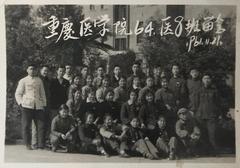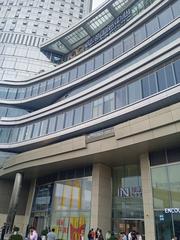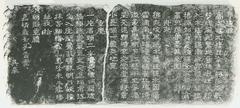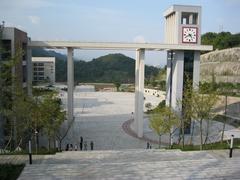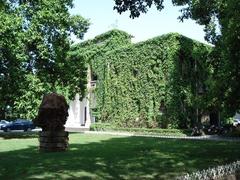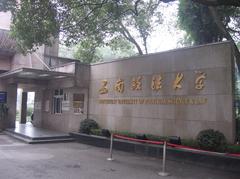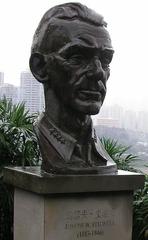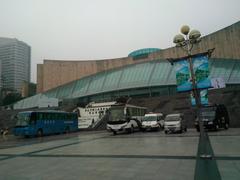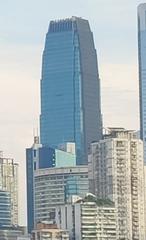Liangping Airport Chongqing: Visiting Hours, Tickets, and Travel Guide
Date: 15/06/2025
Introduction
Liangping Airport, formerly known as Liangshan Airfield, is a historic site in the northeastern part of Chongqing Municipality, China. Established as a military airfield during World War II, it played a pivotal role in Allied operations, later transitioning to civil aviation and contributing significantly to the regional development of Liangping and Wanzhou districts. Although commercial flights ceased in 2003, Liangping Airport remains a symbolic landmark, attracting history enthusiasts and travelers interested in the region’s aviation heritage and cultural richness. This detailed guide provides essential information on the airport’s history, visitor experience, transportation, and nearby attractions, ensuring a well-prepared and rewarding visit.
For more on its history and context, see Nouahsark: Liangping Airport, Prokerala: Liangping Airport, and Springer.
Table of Contents
- Introduction
- Early Origins and Strategic Location
- World War II: Allied Operations and Military Significance
- Transition to Civil Aviation
- Decline and Closure
- Visiting Liangping Airport Today
- Historical Legacy and Cultural Significance
- Visitor Experience and Practical Tips
- Nearby Chongqing Historical Sites and Cultural Attractions
- Accommodation Options
- Security and Safety
- Liangping District Visiting Guide
- Frequently Asked Questions (FAQ)
- Conclusion
- References
Early Origins and Strategic Location
Liangping Airport was strategically located west of Liangping (historically Liangshan), near major routes like China National Highway 318 and the Dazhou-Wanzhou railway (Wikipedia: Liangping, Chongqing). The mountainous, remote terrain made it ideal for military and aviation purposes, especially during times of conflict.
World War II: Allied Operations and Military Significance
During World War II, Liangping (Liangshan) Airfield was a crucial base for the United States Army Air Forces (USAAF) Fourteenth Air Force in the China Defensive Campaign (1942–1945) (Nouahsark: Liangping Airport). The airfield functioned as:
- Transport and Supply Hub: C-47 Skytrain aircraft delivered vital supplies and troops, supporting Allied and Chinese forces.
- Intelligence and Reconnaissance Base: Unarmed P-38 Lightning planes conducted photo-reconnaissance, providing crucial intelligence over Japanese-occupied areas.
- Air Defense Point: The 426th Night Fighter Squadron, flying P-61 Black Widow interceptors, protected Chongqing from air raids.
After the war ended in 1945, American forces withdrew, but the airfield’s wartime legacy cemented its historical importance.
Transition to Civil Aviation
Liangping Airport began serving commercial flights on July 14, 1988, linking Liangping and Wanzhou to major cities such as Chengdu, Wuhan, Xi’an, Chongqing, and Guangzhou (Nouahsark: Liangping Airport). By the early 1990s, it ranked 54th among China’s 110 airports, integrating the region into the national transportation network and stimulating local economic growth. The airport adapted its former military infrastructure for civil use, making it a key gateway for northeastern Chongqing (Prokerala: Liangping Airport).
Decline and Closure
With the rapid rise in air travel and the opening of modern facilities like Wanzhou Wuqiao Airport, all civil flights were transferred by May 2003 (Nouahsark: Liangping Airport). Liangping Airport has since remained closed to commercial flights, though its future use depends on local development plans.
Visiting Liangping Airport Today
Liangping Airport no longer operates regular flights and does not maintain official visitor services such as ticketing or set visiting hours. However, the site holds historical value, and visitors may explore the grounds informally. For those interested in aviation or wartime history, check with local tourism offices about access or occasional guided visits. The airport is accessible via local roads from Liangping town, which is well served by Chongqing’s road and rail networks.
Nearby, visitors can enjoy the region’s rich culture, including traditional villages, bamboo forests, and UNESCO World Heritage sites. Museums in Chongqing may also offer exhibitions on Liangping’s aviation history.
Historical Legacy and Cultural Significance
Liangping Airport’s dual legacy—as a World War II military hub and later a civil aviation gateway—reflects both the resilience and modernization of 20th-century China. Its story underscores Chongqing’s strategic importance and the region’s integration into national and international networks (Nouahsark: Liangping Airport). Today, the airport stands as a monument to both wartime sacrifice and peacetime progress.
Visitor Experience and Practical Tips
Location and Accessibility
Liangping Airport (IATA: LIA, ICAO: ZULP) is located about 150 km northeast of Chongqing’s urban core (AirportGuide.com). Although no longer serving scheduled flights, the area is accessible by road and rail, with Liangping town offering taxis, buses, and ride-hailing services.
Visiting Information
- Hours: No official hours; the site can be viewed from outside unless otherwise restricted.
- Tickets: Not required, as the airport is currently non-operational.
Transport
- Taxis and Ride-Hailing: Available in Liangping. Use DiDi Chuxing or official taxis for safety (TravelChina.Tips).
- Public Transport: Local buses connect Liangping to surrounding areas, but may be limited.
- Car Rental: Services available; note that a Chinese driver’s license is required (Discover-Airport.com).
Payment and Communication
- Mobile Payments: Alipay and WeChat Pay are widely accepted, now supporting international cards (Reddit TravelChina).
- Language: English is limited; translation apps and pre-written addresses in Chinese are helpful.
Facilities and Services
As the terminal is closed, visitor amenities are minimal. For dining or accommodation, head to Liangping city.
Nearby Chongqing Historical Sites and Cultural Attractions
- Ci Qi Kou Ancient Town: Known for well-preserved architecture and local crafts.
- Dazu Rock Carvings: A UNESCO-listed site with outstanding Buddhist sculptures.
- Three Gorges Museum: Offers insight into Chongqing’s history and culture.
Guided tours are available to these attractions through local operators.
Accommodation Options
Liangping offers a range of hotels and guesthouses. For convenience, consider staying in Liangping town or near major attractions. Booking platforms such as Trip.com provide options for various budgets (Trip.com).
Security and Safety
Liangping and the airport site are generally safe, with visible security presence. Use official transport, secure valuables, and avoid unlicensed taxis.
Liangping District Visiting Guide
Historical and Cultural Heritage
Liangping District is among Chongqing’s oldest regions, preserving Bayu culture through its architecture, crafts, and festivals. Notable is the traditional bamboo weaving, with workshops open daily and free to visit, though purchases support local artisans.
Natural Wonders
- Sea of Bamboo (Baili Zhuhai): Spanning over 100 km, this area is ideal for eco-tours and photography. Open 8:00 AM–6:00 PM; entrance around 30 RMB.
- Wetlands and Plains: Offer stunning seasonal scenery and rural guesthouse experiences.
Unique Attractions
- Ruifeng Pavilion: Offers panoramic views; open 7:30 AM–7:00 PM, ticket 20 RMB.
- Local Cuisine: Don’t miss pomelos, bamboo shoot dishes, and market foods.
Ecotourism
Liangping promotes sustainable tourism, protecting bamboo forests and wetlands while supporting local communities.
Getting There
Accessible by train and bus from Chongqing; bike rentals available for local travel.
Accessibility
Most major sites are wheelchair-friendly, but confirm in advance for rural areas.
Frequently Asked Questions (FAQ)
Is Liangping Airport open to the public?
No scheduled flights or official tours, but visitors can view the site. Confirm access with local authorities.
How do I reach Liangping District?
By road or rail from central Chongqing. The airport is west of Liangping town.
Are there guided tours?
For the airport, none are scheduled. Local operators offer tours of historical and natural attractions.
What is the best time to visit?
Spring (March–May) and autumn (September–November) for mild weather and festivals.
Conclusion
Liangping Airport stands as a testament to Chongqing’s strategic importance, from its World War II military role to its era as a regional aviation hub. While no longer serving flights, the site and surrounding district remain compelling for travelers seeking history, culture, and natural beauty. Proper planning—regarding access, transportation, and local highlights—ensures a rewarding visit. For the latest information, download the Audiala app and follow reputable sources and local tourism updates.
References and Further Reading
- Nouahsark: Liangping Airport
- Springer
- Wikipedia: Economy of Chongqing
- Prokerala: Liangping Airport
- Top China Travel: Chongqing Transportation
- AirportGuide.com
- TravelChina.Tips
- Discover-Airport.com
- ichongqing.info: Liangping District
- ichongqing.info: Recreational Paradise
- Trip.com: Chongqing Hotels

